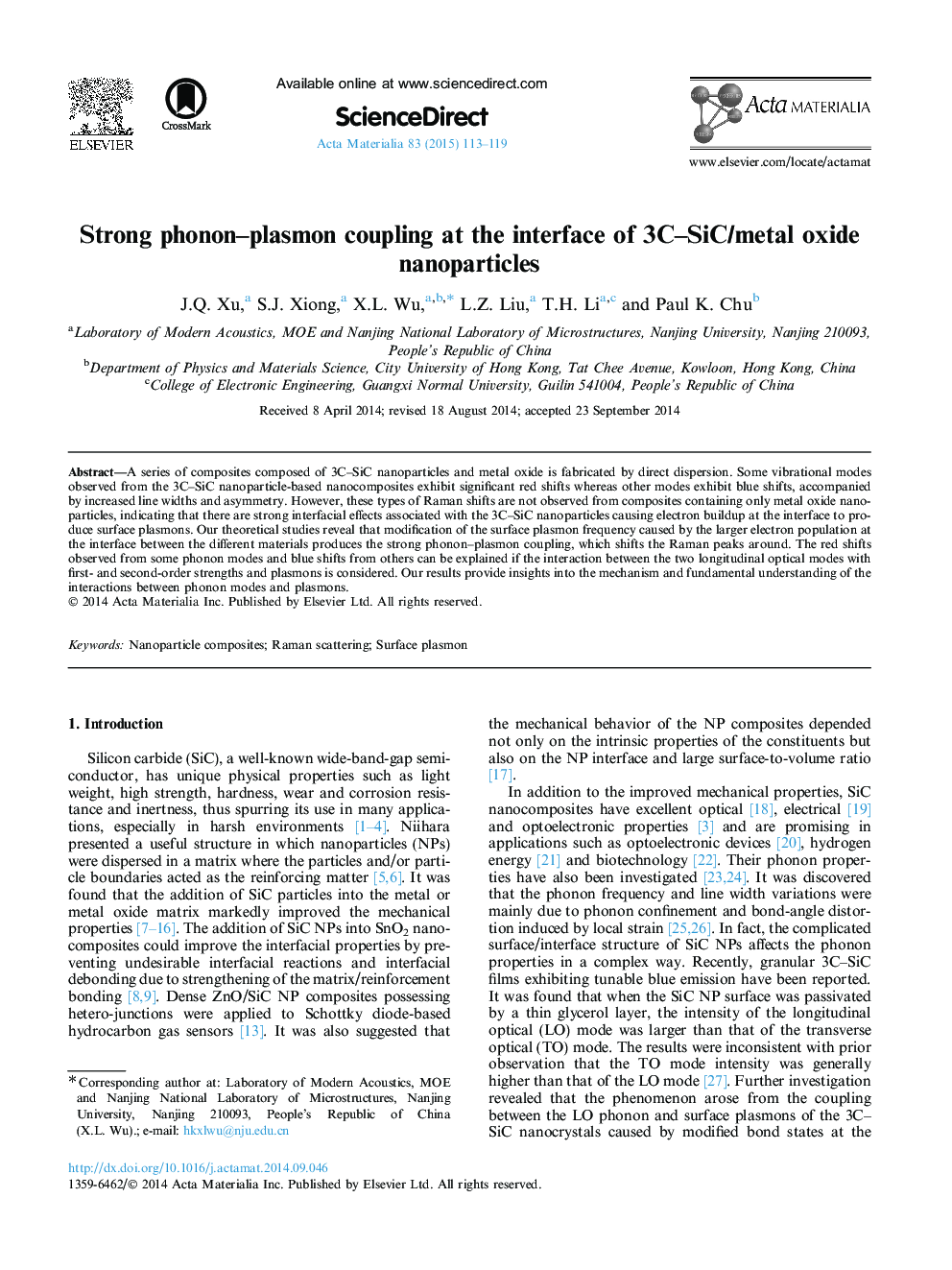| Article ID | Journal | Published Year | Pages | File Type |
|---|---|---|---|---|
| 7880898 | Acta Materialia | 2015 | 7 Pages |
Abstract
A series of composites composed of 3C-SiC nanoparticles and metal oxide is fabricated by direct dispersion. Some vibrational modes observed from the 3C-SiC nanoparticle-based nanocomposites exhibit significant red shifts whereas other modes exhibit blue shifts, accompanied by increased line widths and asymmetry. However, these types of Raman shifts are not observed from composites containing only metal oxide nanoparticles, indicating that there are strong interfacial effects associated with the 3C-SiC nanoparticles causing electron buildup at the interface to produce surface plasmons. Our theoretical studies reveal that modification of the surface plasmon frequency caused by the larger electron population at the interface between the different materials produces the strong phonon-plasmon coupling, which shifts the Raman peaks around. The red shifts observed from some phonon modes and blue shifts from others can be explained if the interaction between the two longitudinal optical modes with first- and second-order strengths and plasmons is considered. Our results provide insights into the mechanism and fundamental understanding of the interactions between phonon modes and plasmons.
Keywords
Related Topics
Physical Sciences and Engineering
Materials Science
Ceramics and Composites
Authors
J.Q. Xu, S.J. Xiong, X.L. Wu, L.Z. Liu, T.H. Li, Paul K. Chu,
